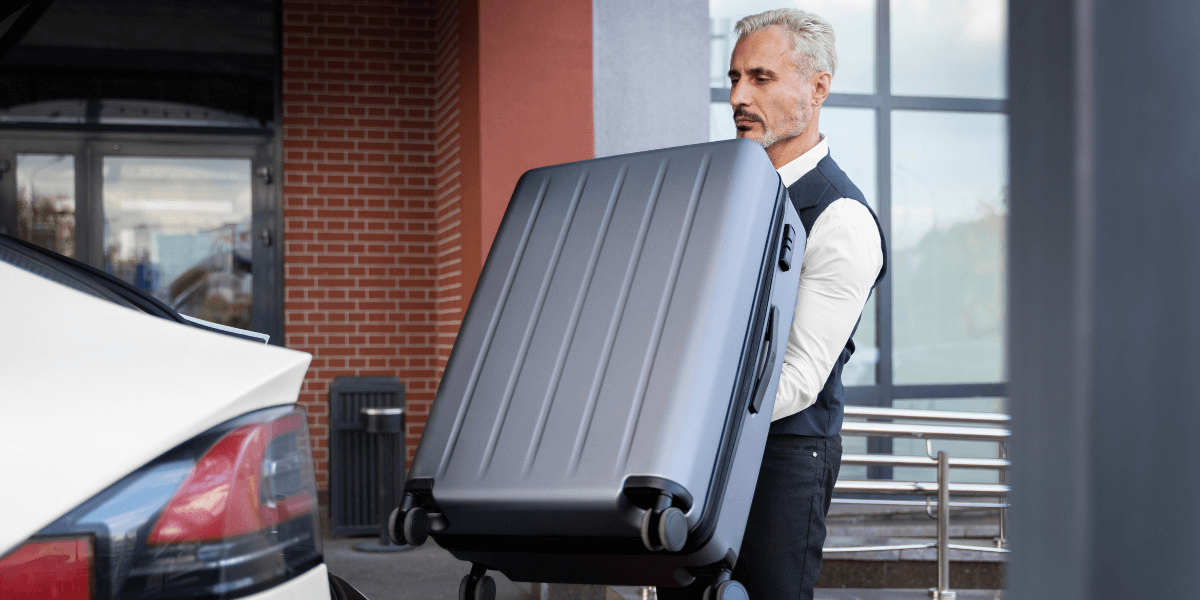
Transferring between train stations can be stressful, especially when you're loaded with bags. However, with a little planning and a few practical adjustments, station transfers can go from chaotic to calm, even with multiple pieces of luggage. This guide covers useful tips for travelling with luggage, keeping your journey smooth and hassle-free.
Preparing Ahead for a Stress-Free Transfer
Check your train times, the duration of your layover, and whether you'll need to switch platforms or terminals. This gives you a clear idea of how much time you’ll need and helps avoid last-minute panic.
Booking assistance in advance, like priority boarding or luggage handling services, is worth considering, especially for senior travellers or families with children.
How to Organise Luggage for Transfers
Start with choosing the right type of luggage; rolling suitcases or backpacks tend to be more manageable than duffel bags or shoulder totes for longer transfers. If your journey involves changing platforms or using public transport in between stations, a wheeled suitcase with 360° rotation makes manoeuvring through crowds much easier.
How to organise luggage for transfers is often about accessibility. Pack essentials like tickets, chargers, passports, and medication in an easy-to-reach compartment or a small carry-on. Avoid overstuffing your bags; stick to only what you truly need to reduce bulk. Keeping weight distributed evenly in your bags also helps with balance and handling.
Best Ways to Carry Luggage on a Train
Getting your bags onto the train can be tricky, especially during peak hours. Most modern trains offer dedicated luggage racks at the ends of the carriage or above the seats. If you're travelling with more than one bag, place the heavier one in the rack and keep a smaller bag or backpack with you for valuables and items you’ll use frequently during the trip.
The best ways to carry luggage on a train often vary based on where you're seated. For instance, if you've got a seat at the end of the carriage, storing bags close by might be easier. If travelling alone, secure your luggage with cable locks or keep it in sight whenever possible. When travelling in groups, assign one person to watch over the bags while others find the seats.
Tips for Travelling with Luggage on Busy Routes
Train routes that pass through large cities or major stations tend to be crowded, particularly during holidays or rush hours. In such cases, tips for travelling with luggage include arriving early, standing near the correct platform exit for faster boarding, and avoiding unnecessary items that will only slow you down.
Wear comfortable shoes and keep your hands free as much as possible by using backpacks or luggage with straps. If you have multiple bags, consolidate where you can. For example, use a travel strap to attach smaller bags to your suitcase handle. This minimises your load and helps maintain better control of your luggage while moving through packed stations.
Train Travel Luggage Safety Tips
Protecting your belongings while on a train is just as important as organising them properly. Train travel luggage safety tips include using locks on zippers and choosing luggage with hidden compartments for storing valuables like passports, money, or jewellery. Try to avoid using flashy or high-end bags that attract unnecessary attention.
If you're travelling overnight or on a long-haul train, keep your most important items close to your seat, preferably in a bag that stays on your lap or underfoot. Avoid placing your bags near exits, as they’re easier for thieves to snatch when the train stops.
Another way to stay safe is by labelling all your bags with your name and contact details. In case they’re misplaced or picked up by someone else, it's easier to track and recover them.
Navigating Transfers with Family or Large Groups
If you’re travelling with kids, elderly relatives, or a group of friends, coordination is crucial. Assign roles, for example, one person handles the tickets, another watches the luggage, and someone else keeps everyone together. Avoid splitting up in crowded stations unless absolutely necessary.
Consider using brightly colored tags, ribbons, or stickers on everyone’s bags to make them easy to identify quickly, especially when everyone has similar-looking suitcases. Make sure everyone knows the plan for the transfer, where to meet, what to do in case someone gets separated, and which platform or exit to head toward.
Instead of squeezing into public transport or hauling bags through busy streets, you’ll have a dedicated ride waiting to get you to your next destination efficiently.
Smart Travel Tools That Help
Technology can make your station transfer smoother. Use apps that track train times in real time, alert you to delays, and provide platform updates. Some apps even show station maps, so you can plan your route to the next train more easily.
Luggage trackers are another useful tool, especially for expensive or essential bags. These devices sync with your smartphone and alert you if your luggage is moved or taken too far from you. While not always necessary, they add an extra layer of peace of mind during busy or unfamiliar transfers.
Post-Arrival Tips: From Station to Destination
Once you’ve arrived at your final station, your trip isn't quite over. If you're continuing your journey by road, make sure you’ve arranged transportation in advance. This saves time and prevents the added stress of flagging down a cab or navigating public buses with bags in tow.
Final Thoughts
Transferring between train stations with luggage doesn’t have to be overwhelming. With some preparation, the right packing strategy, and a few simple safety practices, you can avoid most common issues and enjoy a smoother travel experience.
Need a private taxi in Newport? At Prime Taxis, we offer safe and reliable transport options that make your journey more comfortable. When it comes to airport transfers from Newport to Bristol, we make sure you and your luggage reach your destination with ease. Book your ride today and travel stress-free!
|